
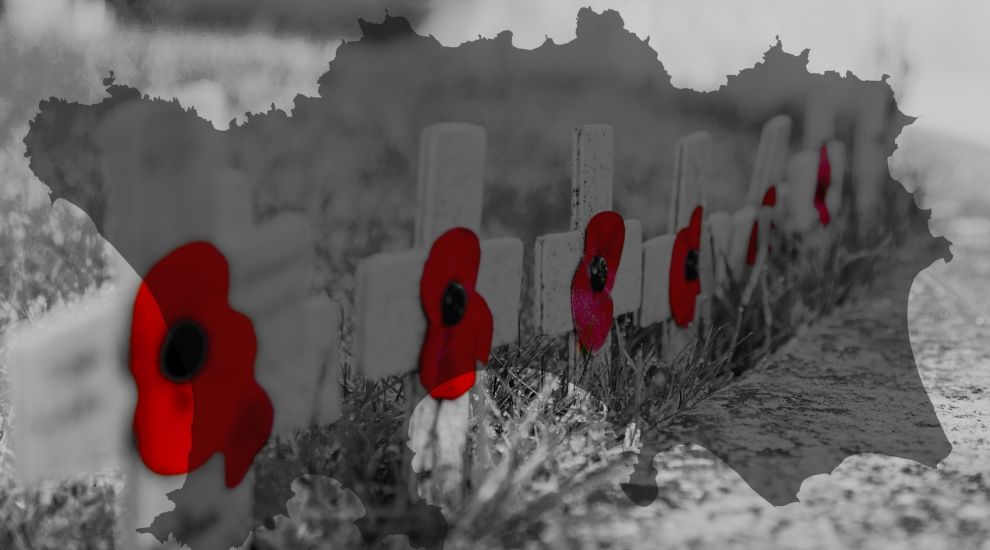

More than 900 islanders died during the First World War in all branches of service. Here are just a few of their stories.
The tragedy of the First World War has always been used as a vessel by which we remember all conflict, past and present.
Nothing evokes the spirit of remembrance than the image of trenches, barbed wire and rows of poppies in no-man’s land.
The Jersey Roll of Service, which chronicles all those who served during the war, contains 6,292 names. They served in all branches of service, on land, at sea and in the air, in all far-flung parts of the globe. Jersey people were present at every milestone of the First World war, and many would make the ultimate sacrifice.
The Great War began in a summer haze of heady optimism. In July 1914, Europe was ablaze with patriotic fervour as the armies of the great continental powers marched into the most devastating conflict the world had yet seen.
Britain’s contribution to the land war, the BEF, landed in France in August. By the standards of the day, Britain’s army was tiny; A small force of 80,000 entirely professional soldiers, utterly dwarfed by the vast European conscript armies - France’s army numbered 1.3m men and Germany’s 3.8m.
It was so small, that the Kaiser himself referred to it as “that contemptible little army”. As a result, the BEF of 1914 referred to themselves proudly as 'the Old Contemptibles'.
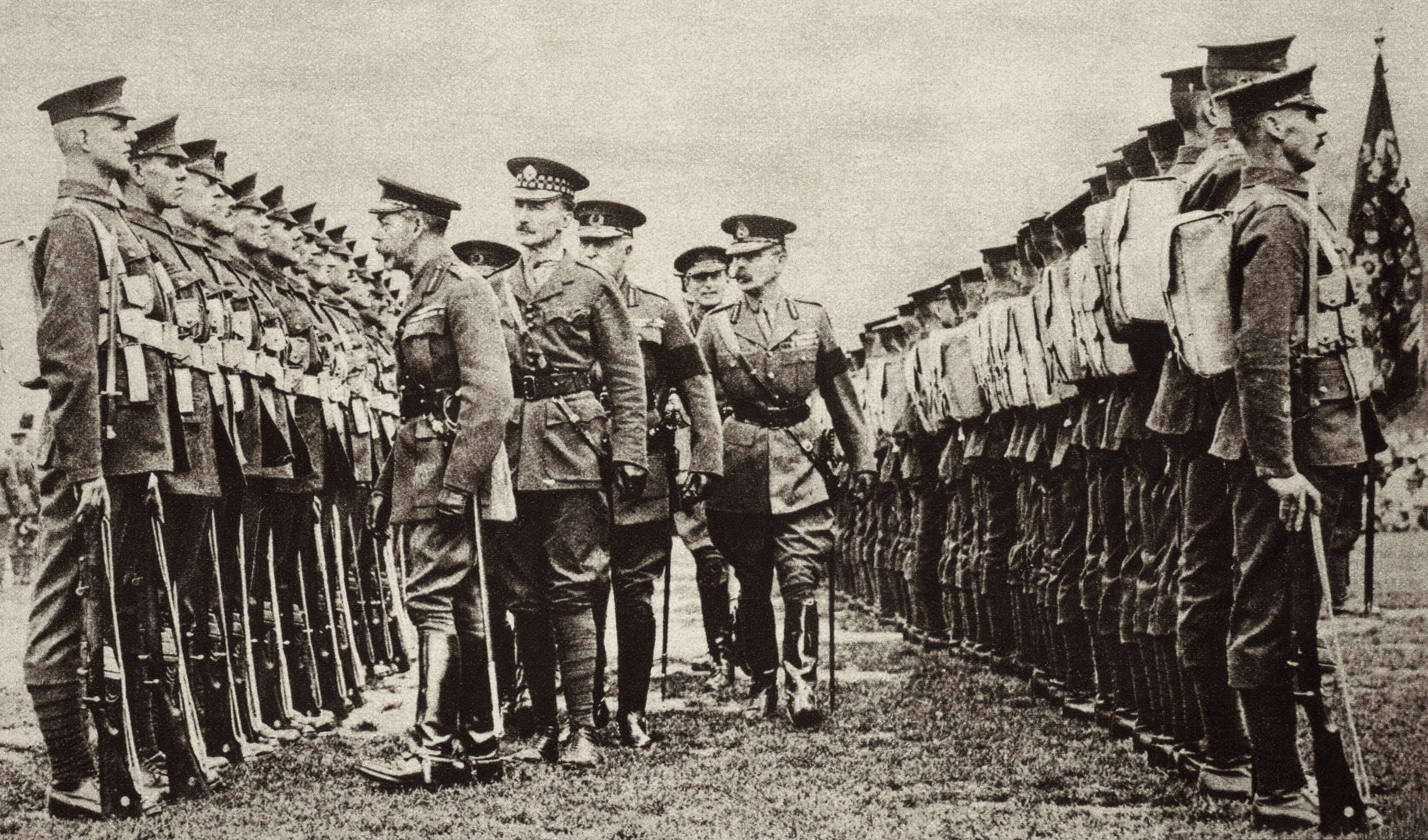
Pictured: King George V inspects new recruits of the British Army who will soon be sent to the Western Front in France.
Among the 'Old Contemptibles' was a smattering of islanders.
Philip Frederick Mallett, the only son of Philip John and Emma Ann Mallet of 12 Windsor Road in St Helier, had joined the Army before the war and by 1914 was a Sergeant in the Gloucestershire Regiment. Mallett would witness the first contact between British and German troops, as the pitifully small BEF tried to stop the German war-machine on its inevitable rumble towards Paris at the small town of Mons on the 23 August 1914.
After a vicious battle, the BEF were forced to withdraw. Mallet would have then taken part in the gruelling retreat of over 200 miles in the scorching summer heat, all the way over the River Marne, with the German’s nipping at their heels all the time. At the river Marne, the German’s were finally stopped in their tracks and prevented from reaching Paris.
However, the war had only just started. Soon, the BEF were tasked with pushing the Germans over the river Aisne. It was during this battle, on the 14 September 1914, that Philip Mallett was wounded. He was shot through the thigh, and was sent to a hospital in Brighton to recover, sending a postcard to his mother telling her he was well and hoped to rejoin his regiment soon. He would soon be sent back to the front.
The summer optimism fell away as the winter approached, and the stalemate so associated with the First World War set in. No side could advance against the other and so they dug in, creating a network of Trenches and barbed wire that would stay constant features of the war until its end.
The rest of 1914 and 1915 would see the original BEF utterly annihilated in the ferocious fighting at places like Ypres, Neuve Chappelle and Loos. This can be illustrated by the experience of one Jersey family, whose story is well-known to any Old Victorian.
The Dunlops saw five brothers serve in the Great War, three of whom would be killed in action. All three were killed during this period. First, Captain Julian Strickland Dunlop would be among the 50,000 casualties of the First Battle of Ypres, when he was killed in action on 24 October whilst leading a bayonet charge. One of his men wrote to the Evening Post: "When we got back to where the Captain lay some of our fellows had a job to keep tears from their eyes... Our fellows could not forget our good old Captain for days after."
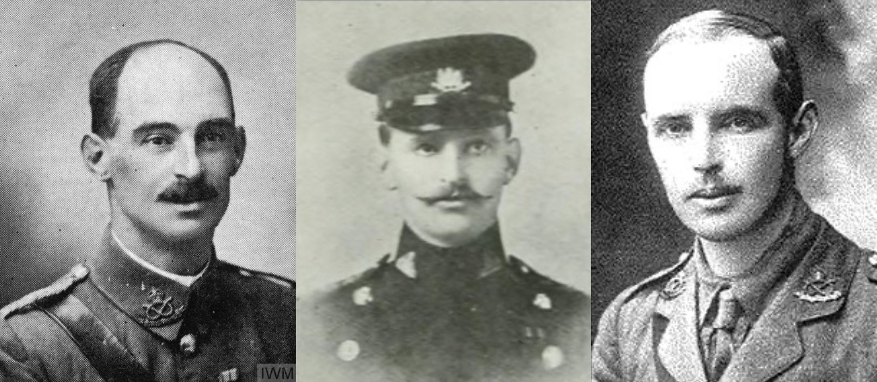
Pictured - left to right: Julian Dunlop, Frederick Dunlop, Kenneth Dunlop.
Next, was Captain Frederick Dunlop, who was killed just a little while later on 8 November by a sniper near the town La Bassée by the Belgian border. Last, was Second-Lieutenant Kenneth Dunlop. The youngest of the three at 33 years old, Kenneth was killed on 25 of September 1915 on the opening day of the battle of Loos. A notice appeared in the newspaper five days later: "It is with the deepest possible regret that we received the news of the death of Lieutenant Kenneth Strickland Dunlop… The sympathy of everyone will today be offered to the grief-stricken parents in this new sorrow that has come upon them."
Kenneth was one of nearly 60,000 British casualties sustained during the battle of Loss for no gain whatsoever. The 'Old Contemptibles' were all but gone, and the war had barely begun.
By 1916, the war had entered a new phase. With its professional army expended, Britain needed volunteers. To fill its expanding ranks, Britain turned to the thousands of eager young recruits who had flooded recruiting posts inspired by the famous image of the Secretary of State for War Lord Herbert Kitchener's Moustachioed face pointing right at them: 'Your Country Needs You!'
Among these recruits was 21-year-old Private Frederick Cyril Igo. Born in Jersey, Frederick was educated at the Jersey Home for Boys, Haute de la Garenne, and was supposedly renowned for his singing voice as a prominent member of the All Saints Church Choir.
After joining up and being rushed headlong through basic training, Fred was one of millions who were to make up Kitchener’s new army. On 1 July 1916, this inexperienced new army of eager volunteers would be put to the test, and Fred found himself in the Trenches about to take part in the darkest moment of modern British history. The first day of the battle of the Somme.
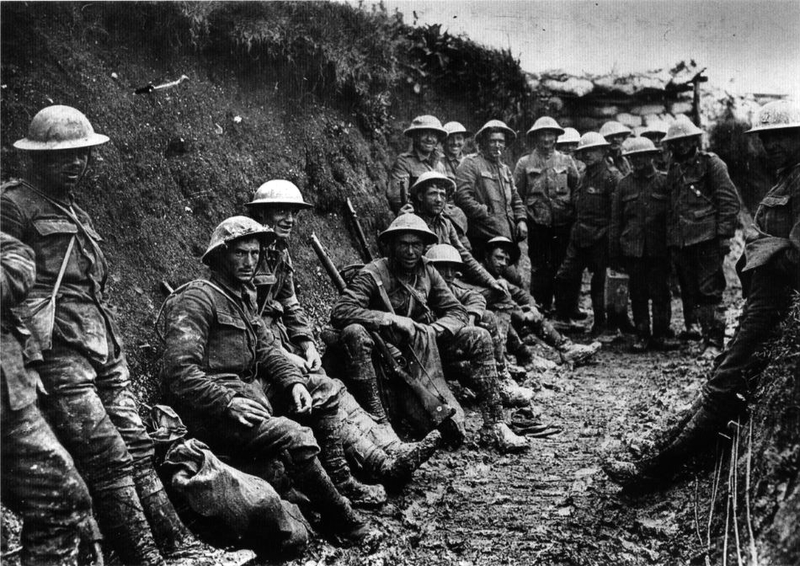
Pictured: Men of the Royal Irish Rifles at the Battle of the Somme. More than 95,000 British soldiers died over the course of the battle.
At 07:30, after the seven-day long preliminary bombardment finally stopped, Fred and the rest of his battalion left their trenches and walked slowly towards the German lines under a hail of machine-gun fire. Of the 1000 men who left the trench, only 200 reached the German first line and only 100 got through to the second line. By 9:15am, they were back where they started.
On that morning, 20,000 British soldiers were killed in the space of a few hours. One of those killed was Fred. His body was left in no man’s land, unrecoverable until the frontlines finally moved on a few weeks later. His body was found by the regimental chaplain who buried Fred in the field where he died and gave him a short service.
The Jersey Evening Post notice read: "He was a dutiful son and lived a brave heroic life, affable and generous to a degree and never happier than when he was singing." In the same notice, his friends from the All Saints Choir said: "We have missed him since he left us, we shall miss him more now that we know we shall never hear his voice again."
The Battle of the Somme would drag on until November and would claim the lives of 95,000 people.
Throughout the war, the Royal Navy imposed a blockade on Germany, in an attempt to force the German Government to capitulate. The War at Sea was largely a stand-off, with neither side wanting to risk their fleets. However, there was one exception.
On 31 May 1916, 151 British and 99 German ships engaged each other in the North Sea - The Battle of Jutland. 14 British ships were sunk, and 6,000 sailors killed. Of those, 26 were from Jersey.
One of them was Midshipman Denis Gerald Ambrose Goddard. Denis had already had an unlucky war, being aboard the HMS Ocean when she sunk in the Dardenelles strait after hitting a mine. He survived, and found himself aboard HMS Lord Nelson where he helped to land troops at Gallipoli, breaking his wrist in the process. After a long sick leave spent in Jersey, he joined the crew of the battleship HMS Queen Mary on the 19 May.
During the battle, HMS Queen Mary was shelled by a German battlecruiser, SMS Defflinger, and was hit in the forward magazine. The ship suddenly exploded, breaking completely in two. Of the 1,275 crewmen on board, only 18 survived. Of those who perished, nine were from Jersey. Denis was one of them. He was 18 years old.
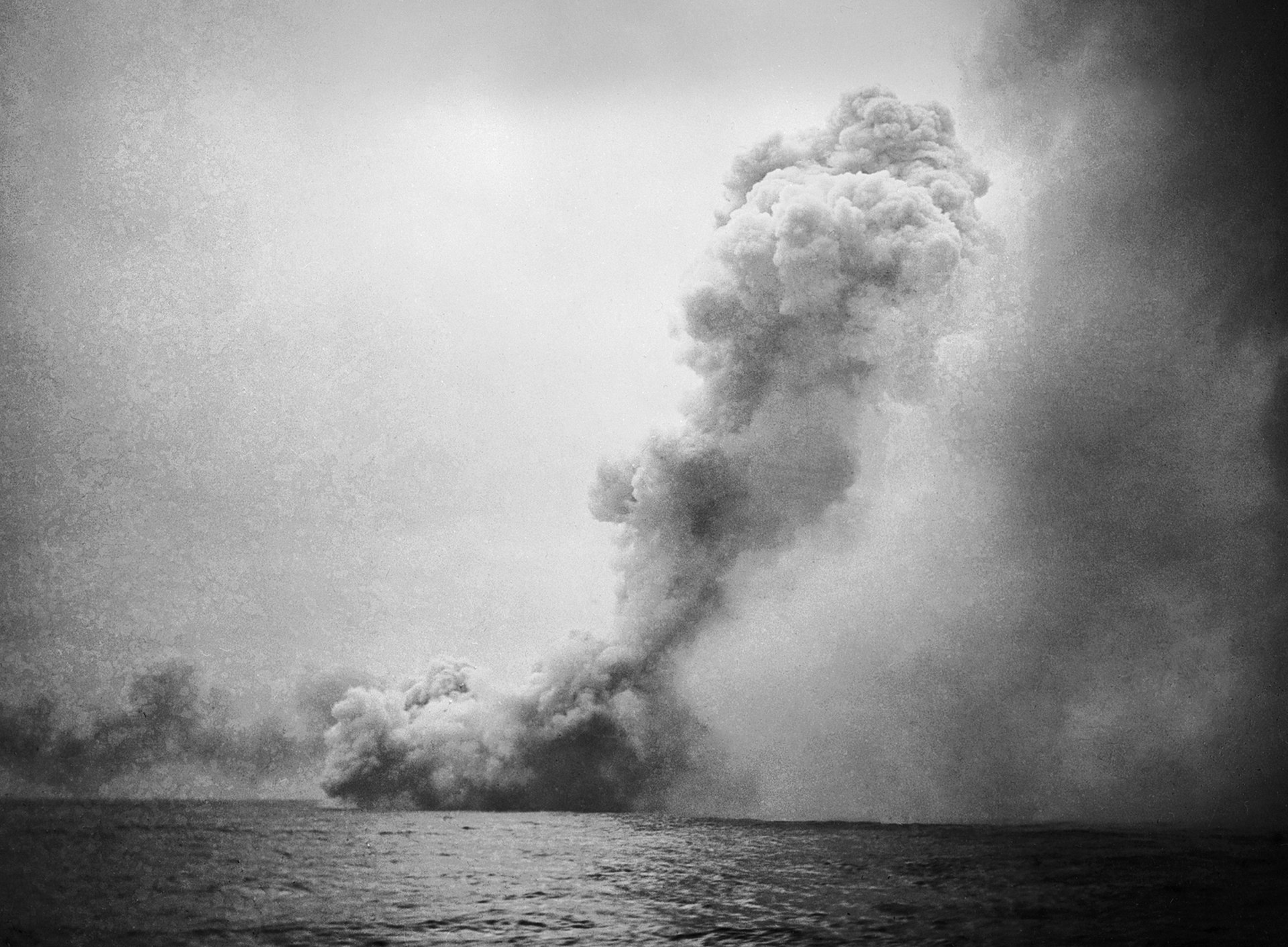
Pictured: The HMS Queen Mary exploding at the battle of Jutland. Nine islanders were aboard. (Imperial War Museum)
Not all Islanders who lost their lives at sea during the Great War were sailors. Indeed, Arthur Lemuel MacGregor was born to Jersey parents in Manchester and moved back to the island when he was 10. He was an Old Victorian and a keen sportsman, achieving his football colours. After leaving school, he moved to New York and began his career as a stock broker on Wall Street.
When the war broke out, he dropped everything and decided to travel back to across the Atlantic to enlist. After being promised an officers commission, he boarded the SS Lusitania which would take him back home.
On 7 May 1915, the ship was torpedoed by a German U-boat and sank in 18 minutes.
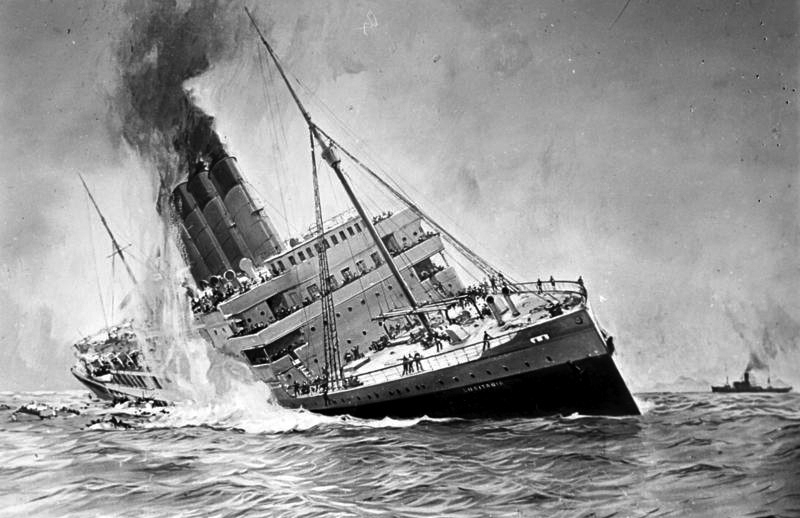
Pictured: The Lusitania sank in 18 minutes after being torpedoed by a German U-boat. 1,198 people lost their lives. (German Federal Archive)
1,198 people died as a result, including Arthur. The sinking of the Lusitania caused outrage in the United States and is often cited as one of the main contributors to their eventual entry into the war.
1917 was a year punctuated by monumental, ultimately futile, attempts to break through the German lines and Islanders were present through it all, often in unexpected places.
One of the largest offensives took place near Arras, in France. The fighting saw the largest gains of the war so far but quicky degenerated into characteristic bloody stalemate costing 160,000 British troops killed, wounded or missing. One of those reported missing was Private Richard Cobden.
Richard Cobden lived an extraordinary life. He was born in St. Helier and joined the army in 1882. He subsequently served in India for 7 years, as well as in Burma, Egypt and South Africa. After his lengthy service, he retired to Australia shortly before the war. When the war broke out, tried to re-enlist, this time in the Australian Imperial Force, but faced a hitch. One of the iconic tragedies of the First World War was young men lying about their age to join up, with boys as young as 14 somehow managing to scrape through. Richard had the opposite problem. The maximum age of recruitment in Australia was 38. Richard, by that time, was 48.
Not to be deterred, he lied about his age and successfully managed to enlist. Upon enlistment he found himself part of the expedition sent by Australia to capture the colony of German New Guinea before eventually being posted to France in 1917. On May 3, 1917, he was reported missing after an abortive attack on the German lines near Bullecourt, as part of the battle of Arras.
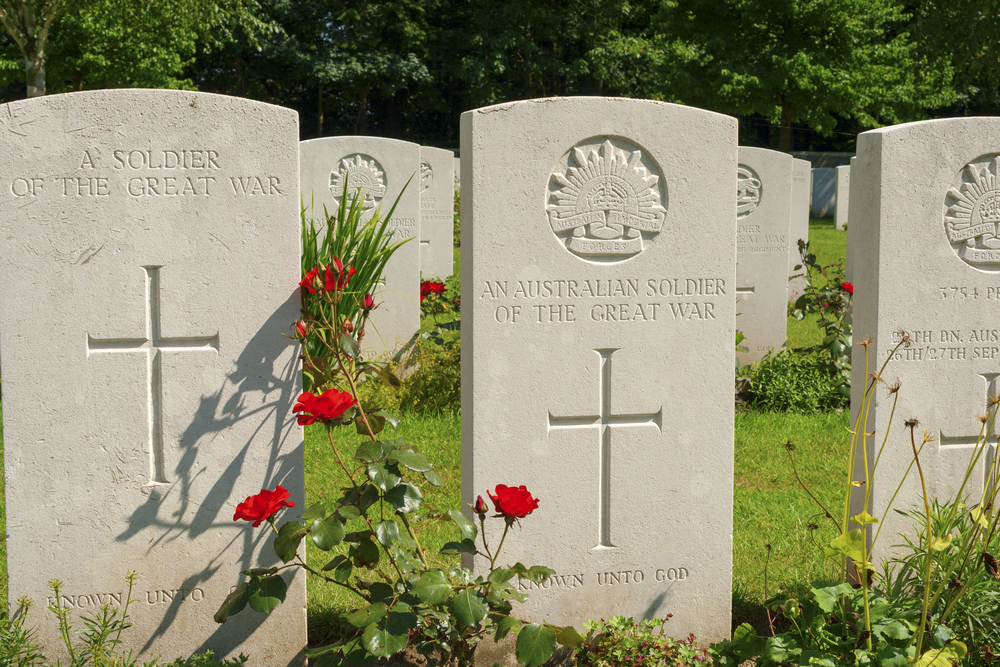
Pictured: More than 60,000 Australian residents died in the First World War. One of them was Jersey-born Private Richard Cobden.
An eye-witness claimed he saw Richard being taken away into captivity along with 20 others apparently "quite well and unhurt". However, shortly afterwards, a court of enquiry determined that he had been killed in action. He was 51 years old.
1918 would see the end of the war, but not before some of the worst fighting, with both the Germans and the Allies launching colossal last-ditch offensives to try and bring it to an end.
However, as the front lines were thrown back and forth, a new danger was beginning to sweep over the Western Front. The Spanish Flu pandemic began in the United States in March 1918 and soon swept across the Atlantic, as more and more American servicemen were transported to France. The effect was catastrophic - in the first half of 1918, half the British servicemen in France would get the flu, and more than 900,000 Germans.
The flu was particularly dangerous to soldiers, worn down after years of malnutrition and strain. Medical services, already swamped with battle casualties, had an entirely new enemy to contend with.
On the frontline against the disease was nurse Elise Mabel Gladstone, who was born in India to Jersey parents and lived in Jersey from 1911 to the outbreak of hostilities. She served at the front from August 1915 and for her services, she was awarded the Royal Red Cross, a military decoration established by Queen Victoria for exceptional services to medicine.
She would survive the war, but not the deadly pandemic. She died in Namur, Belgium, nursing influenza-stricken troops in January 1919 at 32 years of age. She is one of only two female casualties of the war buried in Belgium.
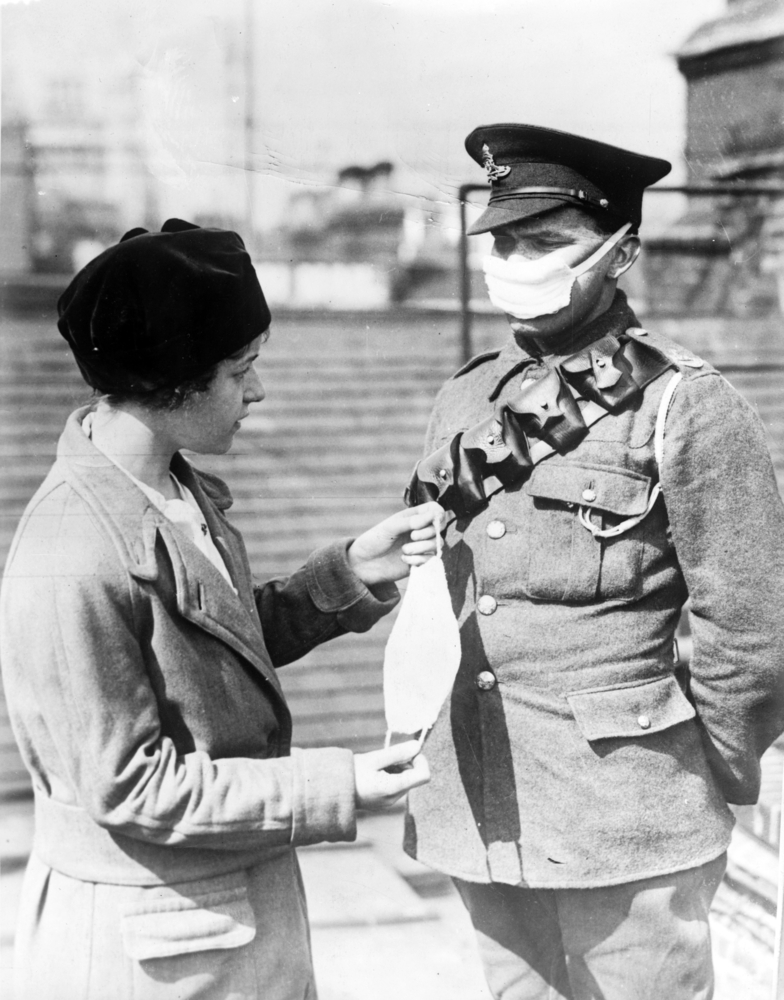
Pictured: A nurse demonstrates a face-mask on a British soldier during the Spanish Flu pandemic.
On 8 August, the allies launched the ‘Hundred Days’ offensive, which would finally see the Germans pushed out of France. However, it was a hugely costly affair, with more than one million casualties in the last three months of fighting. One of them would be a familiar face - Philip Frederick Mallett, who had recovered from his wound sustained in 1914, was back at the front. Since 1914, he had been promoted from Sergeant all the way up to Captain following action at the Somme. At Passchendaele, he won The Military Cross, the second most prestigious medal for gallantry behind the Victoria Cross.
In 1918, he was back in the thick of the fighting as he had been since the battle of Mons in 1914, winning a a bar for his Military Cross in September. The citation reads "his skill and dash resulted in a large number of the enemy being captured after the barrage passed over their dug-outs. Later he repelled a determined counterattack without asking for artillery support and captured 40 prisoners."
In October 1918, he wrote to the Evening Post saying that "he has had a very hard time this year but in spite of the struggle the men are very keen and willing." He even stated that "the only thing against us is the weather." However, on the 6 of November, he was wounded in the head and immediately evacuated to hospital. On 11 November, an Armistice was signed between the Allies and Germany, ending the First World War, the deadliest war in human history at that time, having claimed the lives of 20 million people.
On 12 November, Philip Frederick Mallett, the Old Contemptible, died of his wounds in No. 8 General Hospital, Rouen. He was 33 years old. He left behind a widow and a daughter.
These are just a few examples of the lives lost from Jersey during the Great War. The Jersey Roll of Honour, listing all those who died during the war, contains nearly 900 names.
The names are currently on display digitally in the window of the Santander Work Café.
WATCH: A Remembrance Day message from the Lieutenant Governor
Mystery knitters share Remembrance Day ‘postbox cosy’ creations
Comments
Comments on this story express the views of the commentator only, not Bailiwick Publishing. We are unable to guarantee the accuracy of any of those comments.